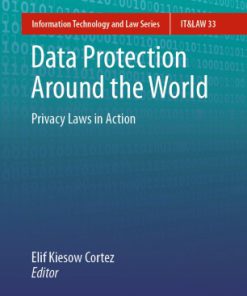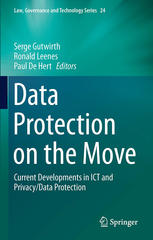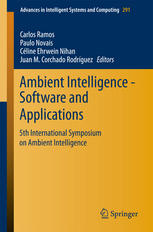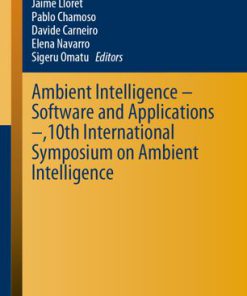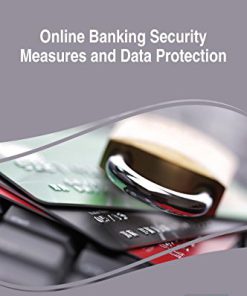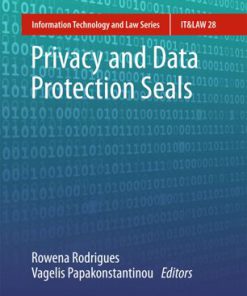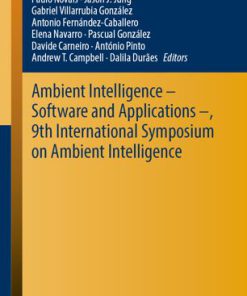Virtuality and Capabilities in a World of Ambient Intelligence New Challenges to Privacy and Data Protection 1st Edition Luiz Costa 3319391984 9783319391984
$50.00 Original price was: $50.00.$25.00Current price is: $25.00.
This completed downloadable of Virtuality and Capabilities in a World of Ambient Intelligence New Challenges to Privacy and Data Protection 1st Edition Luiz Costa

Instant downloaded Virtuality and Capabilities in a World of Ambient Intelligence New Challenges to Privacy and Data Protection 1st Edition Luiz Costa pdf docx epub after payment.
Product details:
- ISBN 10: 3319391984
- ISBN 13: 9783319391984
- Author: Luiz Costa
This book is about power and freedoms in our technological world and has two main objectives. The first is to demonstrate that a theoretical exploration of the algorithmic governmentality hypothesis combined with the capability approach is useful for a better understanding of power and freedoms in Ambient Intelligence, a world where information and communication technologies are invisible, interconnected, context aware, personalized, adaptive to humans and act autonomously. The second is to argue that these theories are useful for a better comprehension of privacy and data protection concepts and the evolution of their regulation. Having these objectives in mind, the book outlines a number of theses based on two threads: first, the elimination of the social effects of uncertainty and the risks to freedoms and, second, the vindication of rights. Inspired by and building on the outcomes of different philosophical and legal approaches, this book embodies an effort to better understand the challenges posed by Ambient Intelligence technologies, opening paths for more effective realization of rights and rooting legal norms in the preservation of the potentiality of human capabilities.
Table of contents:
Chapter 1: Introduction
1.1 Setting the Stage
1.2 Studying Power in Order to Study Freedoms
1.3 Our Ariadne’s Threads
1.3.1 The Elimination of the Social Effects of Uncertainty and the Risks to Freedoms
1.3.2 Vindication of Rights
1.4 The Structure of this Work
References
Legal Documents
Chapter 2: A World of Ambient Intelligence
2.1 Ambient Intelligence, What Is It?
2.2 The Technology Within
2.2.1 Enabling Technologies
2.2.2 A Focus on Automated Profiling
2.2.3 AmI Features
2.2.4 Around the Ideas of Power and Freedoms
2.2.4.1 Ambiguous Relations
2.2.4.2 Drivers
2.2.4.3 Qualifying Power, Qualifying Freedoms
2.3 Conclusions
References
Legal Documents
Chapter 3: The Power Through Technology
3.1 How Non-Neutral?
3.2 Surveillance, an Account of Power Through Technology
3.3 Algorithmic Governmentality
3.3.1 The Concept and the Means of a New Way to Govern
3.3.1.1 Data Behaviorism
3.3.1.2 An Unprecedented Form of Power and How it Operates
3.3.2 Virtuality
3.3.2.1 How Virtual?
3.3.2.2 The Relevance of the Potential
3.4 Conclusions
References
Legal Documents
Chapter 4: The Capability Approach
4.1 Presenting the Capability Approach
4.2 Central Concepts and Distinctions
4.2.1 Freedom and Means to Freedom
4.2.2 Sets of Beings and Doings
4.2.3 Evaluative Spaces: Well-Being and Agency; Freedoms and Achievements
4.3 Capabilities and Human Rights
4.4 At the Crossroads with Theories of Technology
4.4.1 From Access to Technology to the Conversion of Resources into Capabilities
4.4.2 The Impact of Technology Design on Capabilities
4.4.3 Capabilities and Risk
4.4.4 Human Development and Human Enhancement
4.5 Conclusions
4.6 An Evaluation of Part I
References
Legal Documents
Part II: Rights
Chapter 5: Privacy and Human Flourishing
5.1 The Private and the Public
5.1.1 The Private, the Public and the Law
5.1.2 Is There Something Private in Essence?
5.2 Privacy, A Fundamental Human Right
5.2.1 The Multiple Dimensions of Privacy
5.2.1.1 Identity: From Individuals to Dividuals
5.2.1.2 Human Integrity
5.2.1.3 A Focus on Data Protection
5.2.2 Making Some Sense of Privacy: Our Starting Points
5.3 Crossing Languages
5.3.1 Vindicating Rights
5.3.2 Privacy as Long as It Is Free?
5.3.3 Privacy and Well-Being
5.3.4 Virtuality, Privacy and Capabilities
5.4 Conclusions
References
Legal Documents
Chapter 6: Data Protection Law, Processes and Freedoms
6.1 It’s (Almost) Nothing Personal
6.2 The Weak Autonomy
6.2.1 Out of Control
6.2.2 Protecting the Data Subject
6.2.2.1 Principles
6.2.2.2 Responsibility
6.3 The Techno-Legal Approach: Beyond the Good and the Evil?
6.4 How Transparent Should Data Processing Be?
6.5 From Free Flow to Just Aggregation
6.6 Conclusions
References
Legal Documents
Chapter 7: Conclusion
People also search:
virtual reality capabilities
virtuality continuum
virtual environmentalism
virtual worlds and the problems of philosophy
virtualities meaning
You may also like…
Jurisprudence & Law - Foreign & International Law
Data Protection Around the World: Privacy Laws in Action Elif Kiesow Cortez
Politics & Philosophy
Privacy Data Protection and Cybersecurity in Europe 1st Edition Wolf J. Schünemann
Computers - Computer Science




